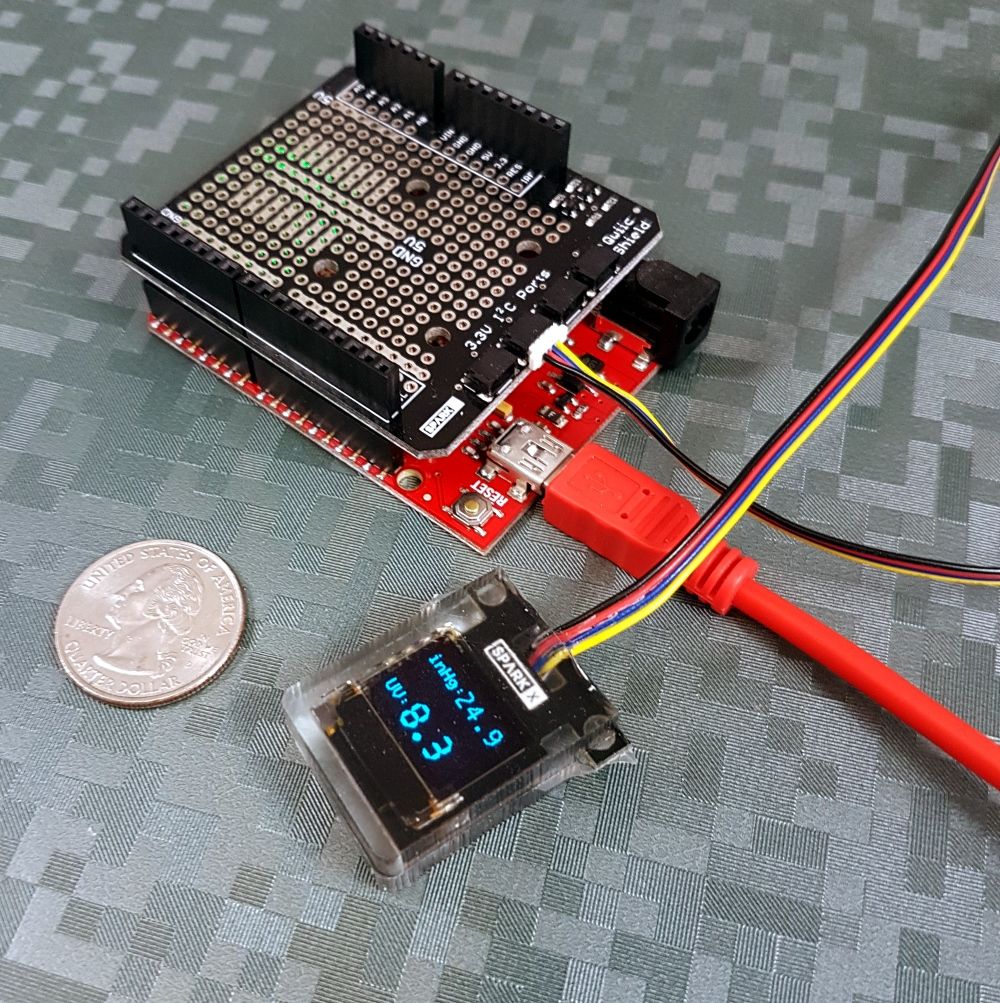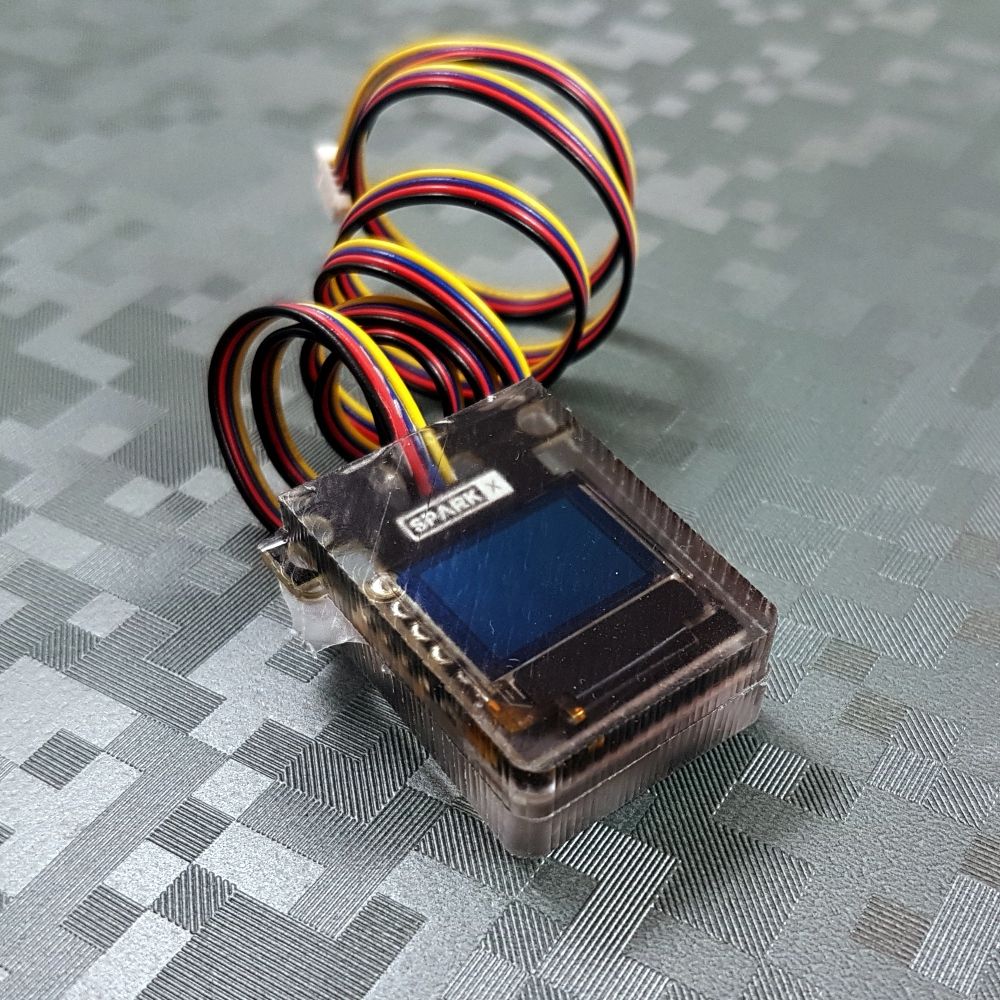Description: We took the Micro OLED and encapsulated it to make it water-resistant. Why? So your fish can watch TV.
The Qwiic Water-Resistant OLED is a small monochrome, blue-on-black OLED fully encapsulated in clear silicone. The OLED display is crisp and you can fit a deceivingly large amount of graphics on there. The encapsulant reduces visibility a little but when submerged in water it disappears. This product is perfect for adding a graphical display to a project exposed to the outdoors or harsh environments. We’ve tested the product in 12" of water for 24 hours and not had problems however we don’t recommend submerging the display for extended (more than 24 hours) lengths of time.
The water-resistant encapsulant means we’ve had to permanently set the OLED display to I2C with a fixed I2C address. If you need an SPI interface checkout our OLED Breakout. If you need to drive multiple Qwiic Water-Resistant displays checkout our Qwiic Mux. In I2C mode, this OLED runs significantly slower than it does in SPI mode. However, it is still a useful and versatile display for low data rate imaging. Displaying current readings from a variety of sensors? Great! Playing a high-speed, side-scrolling video game? Not so much.
The Qwiic Water-Resistant OLED comes with a 500mm cable permanently attached to the display with strong stress relief. There are two mounting holes available as well that can be easily cleared out if needed.
The Qwiic system enables fast and solderless connection between popular platforms and various sensors and actuators. You can read more about the Qwiic system here. We carry 50mm, 100mm, 200mm, 500mm, and breadboard friendly Qwiic cables.
Features:
- Water-resistant OLED display
- Operating Voltage: 3.3V
- Operating Current: 10mA (20mA max)
- Screen Size: 64x48 pixels (0.66" Across)
- Monochrome Blue-on-Black
- I2C Interface
- 500mm Qwiic cable attached for fast connection and optional daisy-chaining
Documentation and Downloads
Check out the SparkFun Micro OLED Breakout Hookup Guide for more information on how to use the Micro OLED.











